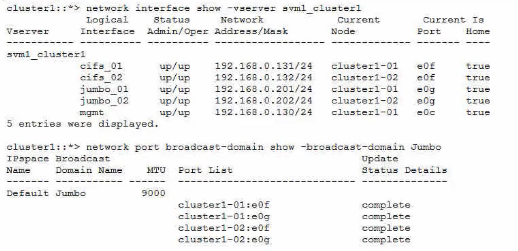A Twinax cable is a type of copper cable that is used to connect cluster ports to cluster switches1.
A cluster port is a network port that is configured for cluster communication and data access2.
A cluster switch is a network switch that is used to interconnect the nodes in a cluster and provide redundancy and load balancing3.
A cluster network is a network that enables cluster communication and data access between the nodes in a cluster and external clients4.
A cluster network can be degraded due to various reasons, such as misconfiguration, malfunction, or excessive link errors on the cluster ports or the cluster switches.
Link errors are errors that occur on the physical layer of the network, such as CRC errors, length errors, alignment errors, or dropped packets.
Link errors can indicate a problem with the cable, the switch port, the network interface card (NIC), or the cable connector.
In this scenario, the alert messages state that the cluster network has degraded and the errors are being generated from Node 2, interface e0b.
The first step to solve this problem is to replace the Twinax cable between Node 2, interface e0b and the NetApp CN1610 switch, as this could be the source of the link errors.
Replacing the cable could resolve the issue and restore the cluster network to a healthy state.
If replacing the cable does not solve the problem, then other steps may be required, such as checking the switch port, the NIC, or the cable connector, or replacing the switch or the motherboard.Reference:
1: Cluster network cabling, ONTAP 9 Documentation Center
2: Cluster ports, ONTAP 9 Documentation Center
3: Cluster switches, ONTAP 9 Documentation Center
4: Cluster network, ONTAP 9 Documentation Center
[5]: How to troubleshoot CLUSTER NETWORK DEGRADED error messages, NetApp Knowledge Base
[6]: Cluster network degraded due to high CRC errors on cluster ports, NetApp Knowledge Base








